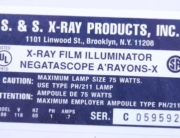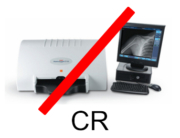The purpose of this blog is to make sure all of the independent service and sales organizations (“ISO’s”) are aware of a recent FDA “docket” item. It is, according to the FDA, to receive comments “concerning the service, maintenance, refurbishment and alteration of medical devices by third-party entities, as well as challenges third-party entities face in maintainging or restoring devices to their original or current specifications.” The FDA states that they have had numerous “concerns” expressed by “stockholders” and felt it was important to address this subject again.
Is this yet another attempt by OEM’s to limit or eliminate the marketplace for ISO’s? Are there serious concerns by equipment users and/or patients? Have there been a large number of notifications to the FDA from facilities regarding faulty equipment that was serviced by ISO’s (as opposed to equipment serviced by OEMs’)?
I am a bit late in getting this blog off of my desk and into cyberspace so the FDA’s “comment” period has already ended, but there will be a workshop later this fall with the FDA to begin the public discussion. Perhaps we will find out more about what is motivating the FDA at that time.
In any case, I felt it was very important that all interested parties get this issue on their radar.
Here are some good articles to read:
General article: http://issuu.com/md-publishing/docs/1604mdmag?e=12554092/34650595
FDA offical “docket”: https://www.federalregister.gov/articles/2016/03/04/2016-04700/refurbishing-reconditioning-rebuilding-remarketing-remanufacturing-and-servicing-of-medical-devices
Some historical information regarding previous FDA reviews: http://www.fdalawblog.net/fda_law_blog_hyman_phelps/2016/03/everything-old-is-new-againfda-request-for-comments-on-medical-device-refurbishing-servicing-and-sim.html
 It is clear that ISO’s are concerned. Diana Upton, President of the International Association of Medical Equipment Remarketers and Servicers, Inc. (IAMERS) submitted that organizaton’s response. They are opposed to any additional regulation of medical equipment servicers and refurbishers. She points out that in 2009, the FDA found no pattern of adverse events indicating that refurbished and remarketed devices have been associated with serious injury. “If there is a lack of uniform performance as some representatives of original equipment manufacturers may be suggesting, its genesis may be the failure of some OEMs to cooperate in providing access with passwords and manuals as they are required to do, under existing FDA regulations, for radiation emitting devices.”
It is clear that ISO’s are concerned. Diana Upton, President of the International Association of Medical Equipment Remarketers and Servicers, Inc. (IAMERS) submitted that organizaton’s response. They are opposed to any additional regulation of medical equipment servicers and refurbishers. She points out that in 2009, the FDA found no pattern of adverse events indicating that refurbished and remarketed devices have been associated with serious injury. “If there is a lack of uniform performance as some representatives of original equipment manufacturers may be suggesting, its genesis may be the failure of some OEMs to cooperate in providing access with passwords and manuals as they are required to do, under existing FDA regulations, for radiation emitting devices.”
But this may not affect just those that refurbish equipment. The FDA is focused on six areas which include (see definitions of each of these at the end of this blog):
- Reconditioning
- Servicing
- Repairing
- Refurbishing
- Remanufacturing
- Remarketing
Every ISO does one or more of these types of work. The one that sticks out like a sore thumb is “remarket”. This is defined as “the act of facilitating the transfer of a previously owned device from one party to another by sale, donation, gift, or lease.”
I think most independent sales companies make a large percentage of their living on the sale of pre-owned equipment. This alone demands that each of us stay aware of what is happening with this docket item.
I will try to keep you informed, but please send me any information you get and your suggestions as to how each of us can be involved.
 I’ll be on vacation from June 26th until July 14th. If you don’t hear back from me right away during that period it doesn’t mean that I’m not interested. I am going to Botswana to see lots of non-human life forms and I’m told that there is absolutely
I’ll be on vacation from June 26th until July 14th. If you don’t hear back from me right away during that period it doesn’t mean that I’m not interested. I am going to Botswana to see lots of non-human life forms and I’m told that there is absolutely
no cell coverage in some of the areas where I’ll be travelling. That is both exciting and scary.
Footnote of Definitions:
- Reconditioner: “Restores and/or refurbishes a medical device to the OEM’s [original equipment manufacturer] original specifications. Under limited circumstances the medical device may be restored and/or refurbished to current specifications.”
- Service: “Maintenance or repair of a finished device after distribution for purposes of returning it to the safety and performance specifications established by the OEM and to meet its original intended use. Servicing cannot change the intended use(s) of the device from its original purpose(s).”
- Repair: “Return the device or component to original specifications including replacing non-working components or parts outside of routine or periodic upkeep for the current owner of the device.”
- Refurbish: “Restore device to a condition of safety and effectiveness that is comparable to when new. This includes reconditioning, repair, installation of certain software/hardware updates that do not change the intended use of the original device, and replacement of worn parts.”
- Remanufacture: “Process, condition, renovate, repackage, restore, or any other act done to a finished device that significantly changes the finished device’s performance, safety specifications, or intended use.”
- Remarket: “The act of facilitating the transfer of a previously owned device from one party to another by sale, donation, gift, or lease.”-









They want to get us out of the picture. They want to force us out. The manufacturers want to monopolize the industry by being the only ones to be able to sell and resell or re-market. I see the problem of “Authorized” dealers like me getting kicked to the curve. The reason why big manufacturers have dealers like us, is because they can’t cover all small customers so they need use us to harvest the leads, but if the customer we serve has absolutely no choice but to go the manufacturer then we will no longer be good for the OEM nor the End-User. The government keeps squeezing, the government keeps its relentless pursuit to be bigger and bigger thus only looking after big conglomerates. I wish not to see the end result of all this . . . an economy where small companies like us can no longer survive in business? we small companies are the drivers of the local and state economies. We are heavily taxed, if they wipe us out eventually, how will this country survive? Conglomerates have huge tax advantages we don’t have. And I didn’t mean to get into a politics and economics but it all comes down to this. Money.
Good points. The funny thing is that every politician talks about small business being the engine of economic growth.
I also believe that the manufacturers are worried about a declining market place. This worry is perhaps driven by senior manager’s short term vision which is itself driven by stock prices and salary performance objectives. They want (need) more command over the sales process to feel that they have control over their targets. In our current market sales are less predictable and taking sales in-house makes these managers believe they can reduce the unpredictability and increase margins. I believe history shows that this type of thinking is wrong.
Another issue is service. Service is an important profit center. The OEM’s would be crazy if they did not want more control of this sector. They will argue that they are the best to service their own equipment, but the fact is that they can never have enough “feet on the ground” to handle the need. That is a critical role of the independent sales and service organization. Hopefully this point will be made loud and clear to the FDA. If patient care is a major consideration, the independent needs to be left in the mix.
We shall see how this play unfolds.
I didn’t realized that refurbished medical equipment was a big business. I can see the need for regulations to make sure that quality equipment is being used, but it can also go too far if regulations are making quality and lower cost products unavailable. Do you know what percent of medical equipment in use is refurbished? Thanks for sharing this information. I twill be interesting to see how things turn out.
The percentage of used equipment as compared to all equipment varies greatly between countries and even types of institution. It any case, it is very significant.
Best
Best Thanks